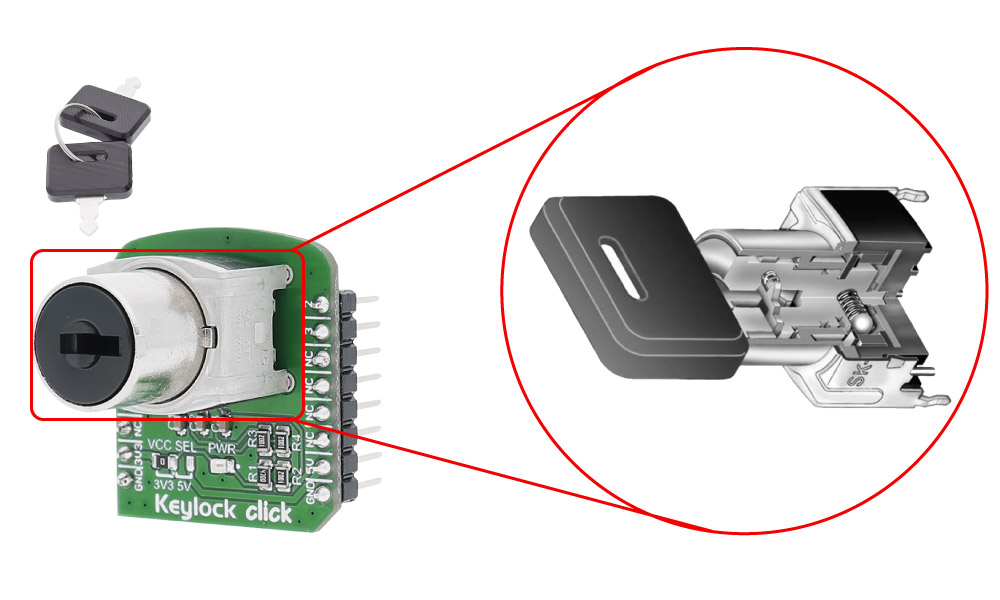




Overview
The Keylock Click Board™ carries a processed sealed key lock mechanism that can be set in three different positions. The Click Board™ is designed to run on either 3.3V or 5V power supply. It communicates with the target microcontroller over the PWM, INT, and AN pin on the MikroBUS line.
The Keylock Click Board™ comes with two keys and a protective cap for the mechanism.
Downloads
The Keylock Click Board™ carries a processed sealed key lock mechanism that can be set in three different positions. The click is designed to run on either 3.3V or 5V power supply. It communicates with the target microcontroller over the PWM, INT, and AN pin on the mikroBUS™ line.

The key can be removed from the lock in any of the three positions. The package contains two keys and one protective cap.
KEYLOCK FEATURES
The contact mechanism provides unequaled logic-level reliability and smoother, positive detent actuation.
Detent mechanism, with its spring-operated steel ball, gives crisp, positive action for accurate switch setting.
SPECIFICATIONS
| Type | Pushbutton/Switches |
| Applications | Use the three different positions of the mechanism to turn applications on or off, for home security applications, for industrial equipment, etc. |
| On-board modules | Keylock switch with 3 positions |
| Key Features | Detent mechanism, with its spring-operated steel ball, gives crisp, positive action for accurate switch setting |
| Interface | GPIO |
| Compatibility | mikroBUS |
| Click board size | S (28.6 x 25.4 mm) |
| Input Voltage | 3.3V or 5V |
PINOUT DIAGRAM
This table shows how the pinout of the Keylock Click Board™ corresponds to the pinout on the mikroBUS™ socket (the latter shown in the two middle columns).
| General Information | |
|---|---|
Part Number (SKU) |
MIKROE-2564
|
Manufacturer |
|
| Physical and Mechanical | |
Weight |
0.033 kg
|
| Other | |
Country of Origin |
|
HS Code Customs Tariff code
|
|
EAN |
8606018711444
|
Warranty |
|
Frequently Asked Questions
Have a Question?
Be the first to ask a question about this.






